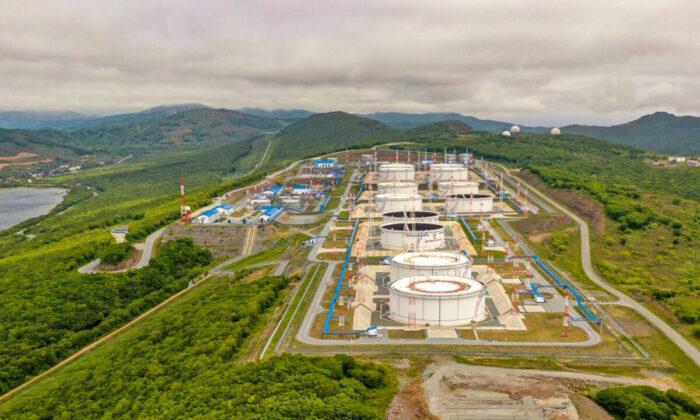LONDON—Oil edged up on Wednesday, a day after settling below $100 a barrel for the first time since April, and gains were limited by a U.S. supply report showing rising inventories and caution ahead of U.S. inflation data.
Despite a tight physical oil market, investors have sold oil futures on worries that aggressive rate hikes to stem inflation will slow economic growth and hit oil demand. Prices fell by more than 7 percent on Tuesday in volatile trade.
Brent crude was up 80 cents, or 0.8 percent, at $100.29 a barrel at 1120 GMT. U.S. West Texas Intermediate crude gained 74 cents, or 0.8 percent, to $96.58.
“Although I don’t rule out more downside surprises, I believe the recent selloff could be getting a little overdone,” said Jeffrey Halley of brokerage OANDA.
Brent is down sharply since hitting $139 in March, close to the all-time high reached in 2008. Renewed COVID-19 curbs in China have weighed on the market this week.
“The worry is that this could lead to a lockdown,” said Naeem Aslam at Avatrade of the Chinese COVID-19 developments. “In addition to this, traders are worried about economic slowdown around the globe.”
The decline in crude futures has yet to be reflected in the strong physical oil market. Forties crude, one of the grades underpinning Brent futures, was bid at a record high premium to the benchmark of plus $5.35 a barrel on Tuesday.
On investors’ radar on Wednesday is the U.S. June consumer prices data, which economists expect to show that U.S. inflation has accelerated to 1.1 percent monthly and 8.8 percent annually.
And for the oil market, the latest U.S. supply report from the Energy Information Administration will be in focus. Analysts expect a decline in crude and gasoline inventories.
The market also is watching President Joe Biden’s visit to the Middle East, where he is expected to ask Saudi Arabia and other Gulf producers to raise oil output.





